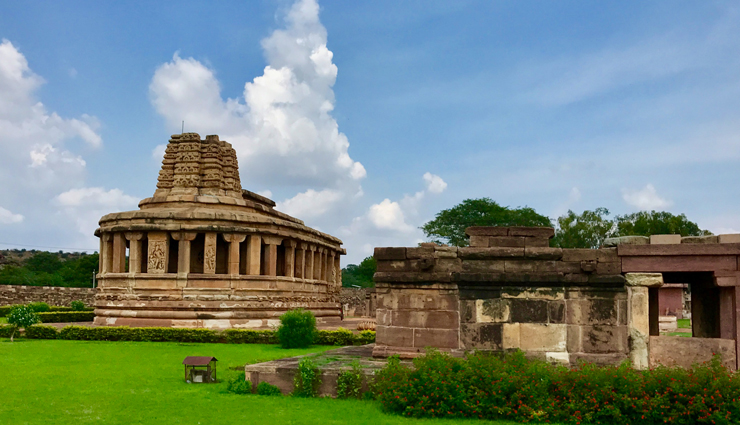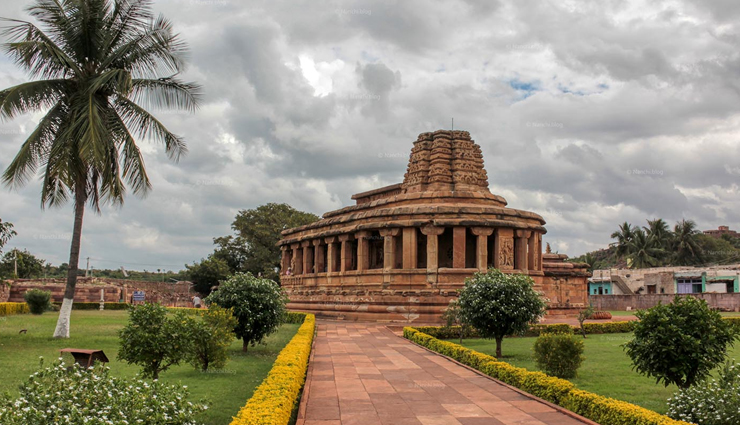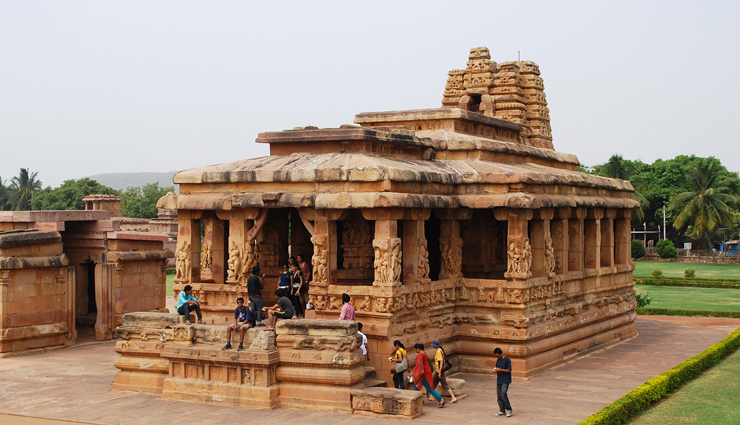History About Durga Temple Aihole
By: Priyanka Maheshwari Tue, 04 Mar 2025 6:16:27

The Durga Temple in Aihole, Karnataka, is a remarkable Hindu temple dating back to the early 8th century. This ancient structure, often referred to as the home of Goddess Durga, was originally dedicated to Lord Surya. However, over time, it came to be associated with the Mother Goddess, as suggested by its name.
The temple is adorned with intricate carvings that reflect the spiritual traditions of Shaivism, Vaishnavism, Vedic practices, and Shaktism. Beyond its artistic brilliance, the temple is architecturally significant for its apsidal (curved) layout, providing a rare glimpse into the innovative temple designs of the early Chalukyan period.
Although Goddess Durga is prominently featured in the temple’s sculptures, the sanctum also houses representations of Lord Vishnu, Lord Shiva, and Lord Brahma, symbolizing the divine Hindu trinity. The temple complex is under the meticulous care of the Archaeological Survey of India and continues to be a vital religious and cultural landmark, drawing thousands of visitors annually.
The Durga Temple stands out among other temples due to its unique shape and structure. With its curved rear and massive columns adorned with intricately carved corbels, it bears a striking resemblance to Greco-Roman architecture. It is widely believed that this temple served as an inspiration for the design of the Indian Parliament House in New Delhi.

Interestingly, despite its name, the temple is not primarily dedicated to Goddess Durga. In Kannada, the term 'durga' means fort, and the temple was originally part of a fortified complex. Over time, it became known as the 'temple at the fort,' and the name endured.
Built by the Badami Chalukyas in the 7th or 8th century, the Durga Temple shares stylistic similarities with the rock-cut caves of Badami. Architecturally, it follows the Dravidian 'Gajaprastha' style—meaning 'elephant’s back'—due to its rounded rear. It also incorporates elements of both the northern 'nagara' and southern 'mantapa' styles, making it a rare and exceptional example of temple architecture in South India.
Above the sanctum (*garbhagriha*) rises the temple’s tower (*shikhara*), designed in the northern *nagara* style. Nearby, a fallen ridged structure known as *amalaka*—once part of the *shikhara*, positioned just below the pinnacle (*kalasa*)—can still be seen.
The temple’s layout is deeply symbolic, with a pillared corridor surrounding the sanctum to facilitate circumambulation (*parikrama*), a vital Hindu ritual. The elevated peristyle platform, accessed via two staircases, reflects architectural elements seen in royal courts and traditional South Indian temples.

The intricately carved pillars within the temple depict various Hindu deities, mythological figures, and floral motifs. Among the most significant sculptures in the temple’s outer corridor are depictions of Shiva’s Nandi bull, Lord Vishnu’s Narasimha and Varaha avatars, Vishnu riding Garuda, an image of Harihara, and the celebrated carving of Goddess Durga slaying the buffalo demon Mahishasura.
Aihole, a historically rich and culturally significant site, is well connected to major cities such as Badami, Pattadakal, and Belgaum. The nearest airports are located in Belgaum (189 km) and Hubli (106 km), with various travel options including Volvo buses, taxis, and private vehicles readily available for visitors.
The Durga Temple remains a testament to the architectural ingenuity and craftsmanship of the Badami Chalukyas, preserving the spiritual and historical essence of Karnataka’s heritage.





